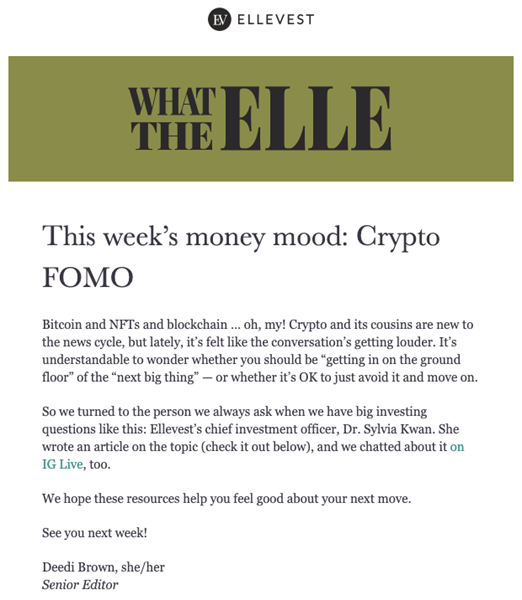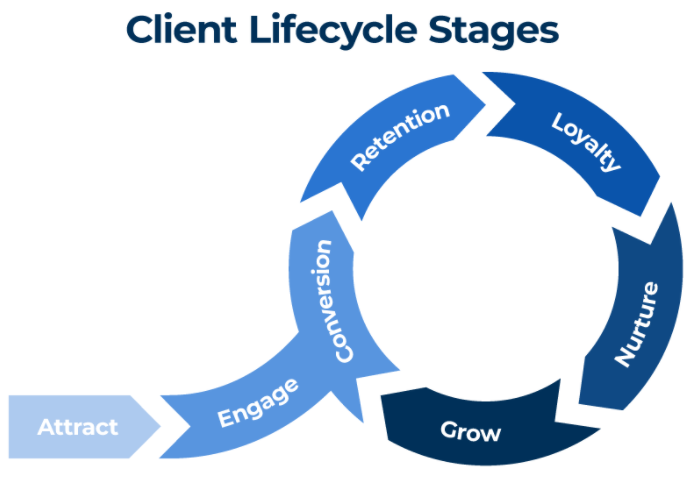Not getting great email engagement? Maybe you’re not connecting. Professional investors are people, and people don’t like feeling like they’re being marketed to. What they do like? Hearing and telling stories. So move beyond a selling state of mind and toward creating authentic connections instead. Let’s dig into storytelling and how to use it to create powerful financial email marketing experiences.
What is (and isn’t) storytelling?
andUnlock our insights
Register your email to access all of our case studies and receive exclusive insights.
We have just sent you an email
Please click the link in the email to confirm your identity.
Not getting great email engagement? Maybe you’re not connecting.
Professional investors are people, and people don’t like feeling like they’re being marketed to. What they do like? Hearing and telling stories. So move beyond a selling state of mind and toward creating authentic connections instead.
Let’s dig into storytelling and how to use it to create powerful financial email marketing experiences.
What is (and isn’t) storytelling?
Storytelling doesn’t mean telling a “once upon a time” fairy tale.
It’s crafting stories that put your clients first, reaching their hearts and minds.
That may seem like fluff, but storytelling is both an art and a science — a collaboration of human psychology, biology, and empathy. According to Harvard Business Publishing, the language processing parts of the brain are activated as well as other areas of the brain used when experiencing a story (e.g., sensory details engaging the brain’s sensory cortex).
But do stories belong in financial services?
Professional investors are busy and don’t have time to think about how you fit into their lives. Effective storytelling creates a shortcut, showing how you solve your clients’ (or their clients’) pain points as they easily envision a world where you help them save the day.
So how do you use storytelling in email marketing?
Don’t be another boring, run-of-the-mill financial marketer spewing just the facts. Follow these tips to stand out in the inbox and take your clients on an exciting email marketing journey.
1. Ditch the sales pitch
Storytelling puts the focus on your clients, not your business. It’s not about you.
Instead of:
Exchange-traded funds (ETFs) are diversified like mutual funds but trade like stocks. They’re a great addition to your investment if you’re looking for middle ground.
Try this:
Love the flexibility of stocks but hate the turbulence? Exchange-traded funds (ETFs) give you the diversification you crave without sacrificing trading power.
The difference is subtle but packs a punch.
2. Lean on a simple storytelling framework
There are many different ways to tell a story, but we like this storytelling framework from Ann Handley, Chief Content Officer of MarketingProfs, because it’s both comprehensive and easy to follow:
- Once upon a time, there was (your product).
- It has the capacity to (your product’s superpower).
- Some people doubt it because (what the doubters might claim).
- But one day, (something happens).
- Which means (how your would-be customer now needs your product).
- To help (the people your customer serves).
- And that matters because (how your customer becomes the hero).
- That brings together a community of (the larger market of those whom your product serves and brings together).
- Someone gets a kiss!
Let’s apply this to an institutional retirement investing example:
We have a pension plan that allows you to invest in your employees’ retirement, but you doubt it because what someone does after they no longer work for you doesn’t impact your business. But here comes the Great Resignation, and all of a sudden, you’re struggling to hire and retain employees. Which means, you should offer them a pension to help invest in their retirement. And that matters because employees will see you as a hero who cares about not only their work but also their personal wellbeing during this mental health crisis. This brings together a community of companies wanting to do better by their employees. Win-win!
You can then translate that into your email marketing:
The two-week notices are piling high, and you’re frantically trying to find new talent (and failing ). Ugh. The Great Resignation is real, and in this job seeker market, competition is cutthroat. With work-life balance top of mind, start offering a pension plan — to appreciate your loyal employees and win the hiring race.
3. Use “You” to paint clients into the picture
Notice how in our examples, we use “you”? Even this blog post is all about “you”. Using the word “you”:
- Keeps you focused on your audience
- Helps your clients imagine themselves in your story
A good rule of thumb: If you have more we, us, I, or your company name than the words you or your, then your email isn’t doing storytelling right.
4. Go behind the scenes
One exception to the above is when you’re telling your company’s story with the goal to humanize your business.
It’s easy to make a faceless entity the villain. But when there’s a story, clients empathize and connect. You become partners in your client’s adventure. Ideas: Talk about your mission and values, introduce team members, or give exclusive sneak peeks and early access.
5. Share your personal view
Now let’s get personal with your story. How can you relate to your clients? Show you understand and aren’t just saying it, you’re living it.
Do this by having emails written from the perspective of someone in your company, like an op-ed. Ellevest does a great job of this with their weekly newsletters that occasionally start with a letter from the CEO or editor:

6. Consider case studies or testimonials
Sharing others’ stories is another way to increase engagement because it shows both community and proof. Similar to word of mouth.
People like knowing they’re not alone, and if it worked for another investor in a similar situation, it could work for them, too. Showcase direct quotes, tell a client’s story on their behalf, highlight ratings & reviews, or display social media posts.
7. Stimulate the senses with images, video, and audio
We’ve been talking a lot about words here, but remember that storytelling can activate the senses. What better way to do that than to actually use visuals and sound for a more immersive experience? After all, a picture’s worth a thousand words.
Use images and animated GIFs to show what you’re talking about. You can even embed a playable video in email or use a screenshot of a video with the play button over it that’ll lead to a landing page with the video on it. This goes for audio in email, too.
8. Create “chapters” in an ongoing story
Your story shouldn’t end after one email. Treat each email like a chapter in the broader tale of your clients’ lifecycle — nudging them along from engagement and conversion to retention and growth.

Keep the journey going, evolving the story as each client chooses their own adventure via different activities and interactions they have or don’t have with your company. What’s next after this email? And after that one? If a client registers for an in-person event but doesn’t show, do you send them a “thank you” or a “sorry we missed you”?
Storytelling to the rescue!
You don’t offer one-size-fits-all solutions to your clients. Neither should your emails. Use these financial services email marketing storytelling tips to connect with your clients, save the day, and rescue your emails from the trash.
Get help putting storytelling into practice and find your happily ever after with StoneShot’s email marketing platform and agency services. What you’ll get: a friendly face and superior customer service. What you won’t get? A faceless organization that treats you like a number. Interested? Let’s chat.
We’re always sharing fresh case studies and blogs packed with insights. Sign up now and be the first to know!
Subscribe





